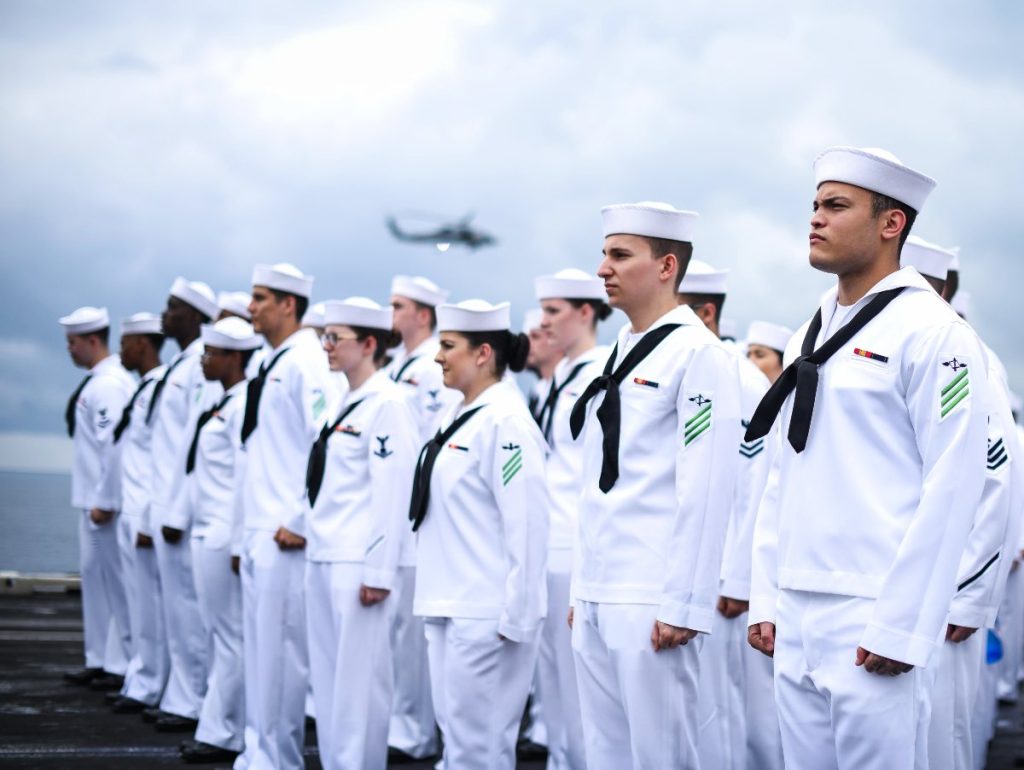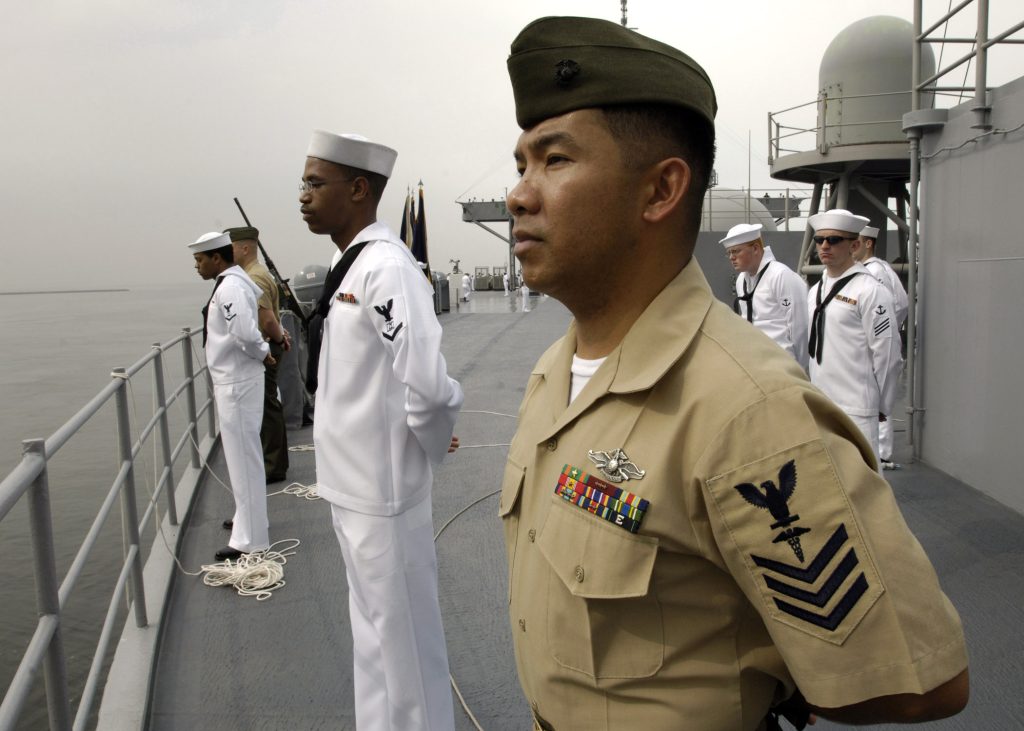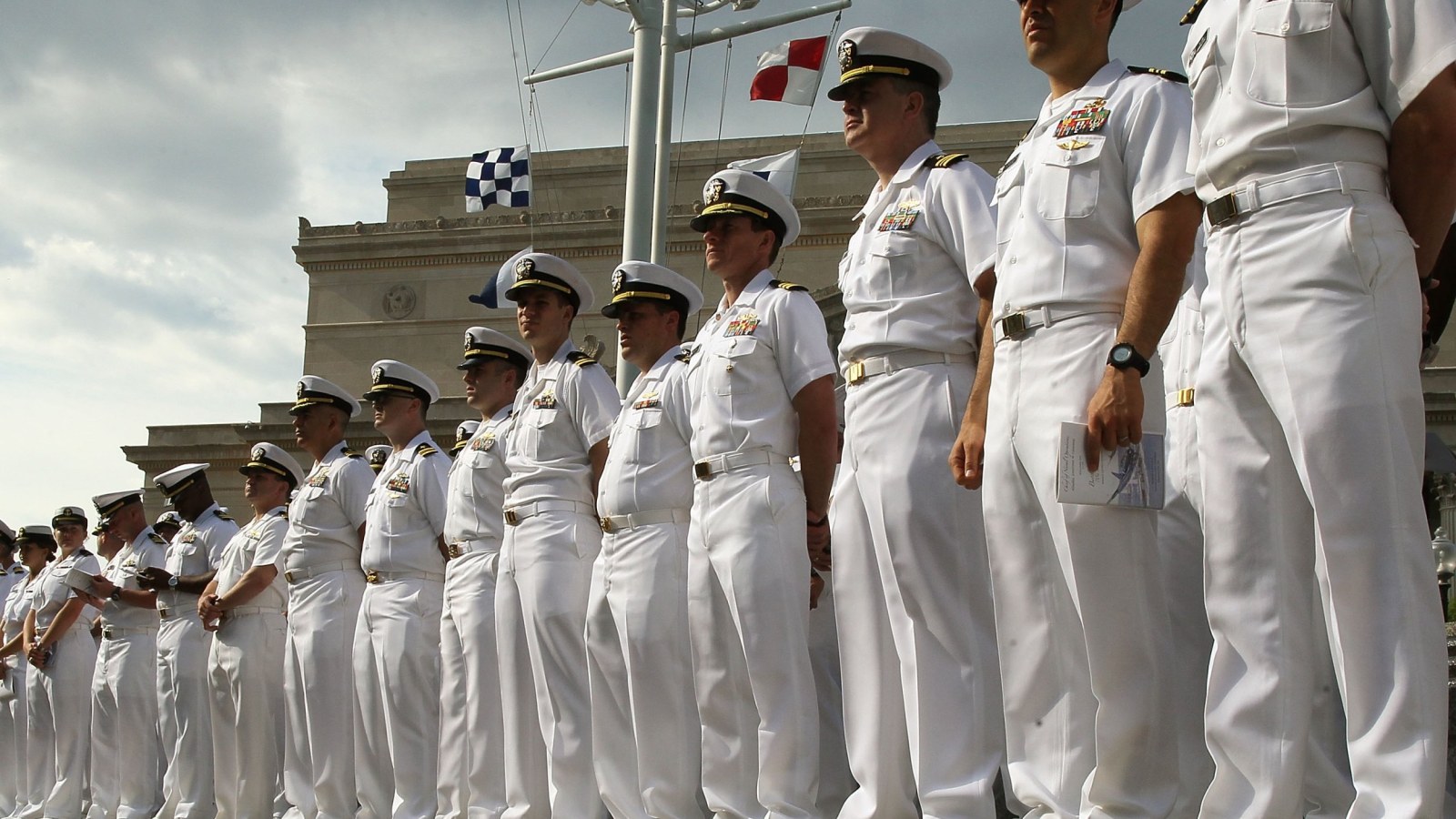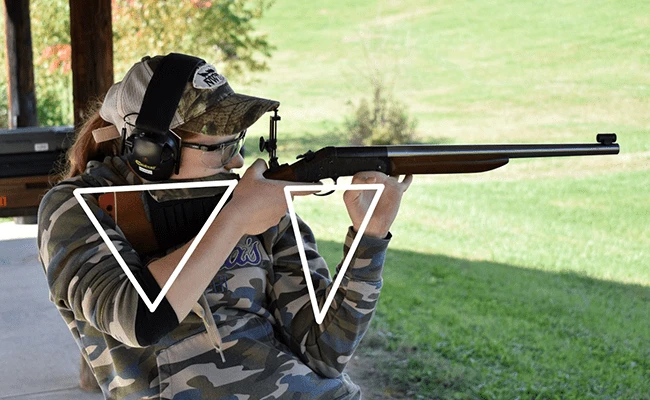Sailors wear bell bottoms for both practical and historical reasons. The wide-legged design of bell bottoms allows sailors to easily roll up their pants when they are on deck, providing convenience during wet and messy conditions. This design helps prevent water from getting trapped in the pant legs, keeping sailors dry and comfortable.
Historically, bell bottoms have been a part of maritime fashion for centuries. Their origins can be traced back to the 18th century Royal Navy, where they were introduced as part of the uniform. The wide legs made it easier for sailors to remove their pants quickly when they needed to abandon ship or swim ashore.
How Do Bell Bottoms Benefit Sailors In Their Daily Work?

Bell bottoms offer several practical benefits to sailors in their daily work. These benefits make them well-suited for the unique challenges and conditions sailors face at sea.
Ease of Movement
Freedom to Move: Bell bottoms are designed with wide and loose-fitting legs, providing sailors with the freedom to move and perform a wide range of physical tasks on the ship’s deck.
Bending and Crouching: The extra fabric at the lower part of the pants allows sailors to bend, crouch, kneel, or squat comfortably as they handle rigging, equipment, or cargo.
Practical Design Features
Rolling Up Pant Legs: The wide openings at the bottom of bell bottoms allow for easy rolling up of pant legs. This feature is invaluable when sailors need to wade through water on the ship’s deck or work in wet and messy conditions, keeping them dry and comfortable.
Preventing Water Retention: The wide legs also help prevent water from getting trapped in the pant legs, as excess water can add weight and discomfort while working on a ship.
Safety and Quick Removal
Emergency Situations: The wide legs of bell bottoms enable sailors to quickly remove their pants in emergency situations. This feature is essential in cases of shipwrecks or when sailors need to abandon ship, facilitating swimming or other escape measures.
Enhanced Safety: Quick removal in emergencies enhances safety and survival, ensuring that sailors can react promptly and effectively when unforeseen crises arise.
Durability and Resilience
Durable Materials: Bell bottoms are typically constructed from durable and sturdy materials, designed to withstand the harsh conditions and physical demands of maritime work.
Resistance to Wear and Tear: The durability of bell bottoms ensures they can withstand the wear and tear associated with daily tasks, exposure to saltwater, harsh weather, and constant movement on a ship.
Symbolism and Tradition
Iconic Maritime Attire: Bell bottoms have become an iconic part of maritime attire, symbolizing the seafaring tradition. They connect modern sailors to the rich history and heritage of naval service.
Cultural Identity: Wearing bell bottoms instills a sense of identity and pride among sailors, serving as a visible reminder of their role in maritime traditions and their commitment to a profession with a long and storied history.
How Have Bell Bottoms Become A Symbol Of Naval Tradition?
Bell bottoms have become an enduring symbol of naval tradition for several compelling reasons:
Historical Legacy
Origin in the Royal Navy: Bell bottoms have their roots in the 18th century Royal Navy, where they were first introduced. This historical connection endows them with a rich legacy closely tied to naval service.
Longevity in Naval Attire: The persistence of bell bottoms in naval uniforms for centuries demonstrates their significance in maritime history. Their continuous presence underscores their role in shaping the identity of sailors.
Distinctive Appearance
Easily Recognizable: The wide-legged design of bell bottoms creates a unique and easily recognizable appearance. Sailors in bell bottoms stand out, and their attire serves as a visual representation of their profession.
Uniformity and Cohesion: Bell bottoms contribute to the sense of uniformity and cohesion among naval personnel. They foster a sense of belonging and shared identity within the naval community.
Functionality and Practicality
Practicality and Purpose: Bell bottoms were originally designed to serve practical purposes at sea, such as facilitating movement and quick removal in emergencies. This functional aspect became deeply ingrained in naval culture.
Practical Tradition: The fact that bell bottoms were adopted for their utility at sea highlights the pragmatic nature of naval tradition, where traditions often have a strong basis in practical necessity.
Cultural Significance
Cultural Heritage: Bell bottoms are not just a piece of clothing. They represent a cultural heritage associated with the maritime world. They are a reminder of the unique challenges and traditions of a sailor’s life.
Cultural Icons: Iconic figures in naval history, as well as popular culture, have often been depicted wearing bell bottoms, further reinforcing their association with the sea and naval service.
Continuity and Respect for Tradition
Continued Use: Many navies worldwide still include bell bottoms as part of their uniforms. The fact that this traditional attire endures reflects the respect for the past and an acknowledgment of the importance of preserving naval heritage.
Ceremonial Occasions: Bell bottoms are often worn during ceremonial events and official functions, emphasizing their role in upholding the traditions of naval service.
Do sailors still wear bell bottoms in modern times?
In modern times, the use of bell bottoms in naval uniforms has evolved, and they are less commonly worn as everyday attire by sailors.
Transition to Modern Uniforms
Many modern navies have transitioned to more contemporary and functional uniform designs that are better suited to the requirements of modern naval service. These uniforms often feature more streamlined and practical styles.
Utility and Functionality
While bell bottoms were historically practical for sailors in certain aspects, modern uniforms have been developed with enhanced functionality, incorporating materials that are more resistant to environmental conditions, moisture-wicking properties, and ergonomic designs for ease of movement.
Ceremonial and Dress Occasions
Bell bottoms may still have a role in ceremonial or dress uniforms for some navies. They are occasionally worn during special occasions, parades, or events that emphasize tradition and heritage.
Symbolic Significance
Bell bottoms continue to hold symbolic significance within the naval community. They are a reminder of the rich history and traditions of seafaring, and their use during specific events serves as a tribute to naval heritage.
Variations in Different Navies
The use of bell bottoms varies from one navy to another. Some navies may retain them as part of their formal dress uniforms, while others have completely phased them out in favor of more contemporary styles.
Who Are Some Famous Individuals Known For Wearing Bell Bottoms?

Bell bottoms became a popular fashion trend in the 1960s and 1970s, and several famous individuals from that era are known for their association with this distinctive style. Here are some notable figures who are famous for wearing bell bottoms
Elvis Presley: The King of Rock ‘n’ Roll, Elvis Presley, was known for his flamboyant fashion sense. He often wore bell-bottom jumpsuits during his iconic performances.
The Beatles: The Beatles, particularly during their psychedelic phase, were known for their colorful and experimental fashion choices, which included bell-bottom trousers.
Janis Joplin: The legendary rock singer and songwriter Janis Joplin was a fashion icon of the 1960s. Her eclectic style often featured bell bottoms, fringe vests, and other bohemian elements.
Jimi Hendrix: The iconic guitarist Jimi Hendrix was a fashion trendsetter of his time. His stage attire frequently included bell-bottom pants along with other psychedelic and bohemian clothing items.
Farrah Fawcett: The actress and model, best known for her role in the television series “Charlie’s Angels,” popularized high-waisted, flared bell-bottom pants as part of her signature style.
John Travolta: In the 1970s, John Travolta gained fame for his role in the movie “Saturday Night Fever,” in which he donned tight-fitting disco bell bottoms, contributing to the disco fashion trend.
Sonny and Cher: The musical duo Sonny and Cher were known for their eclectic fashion choices, with both of them often sporting bell bottoms, fringed vests, and other bohemian elements.
Twiggy: The British model and fashion icon Twiggy was a prominent figure of the 1960s mod fashion scene. She frequently wore bell-bottom pants as part of her signature look.
David Bowie: The legendary musician and fashion chameleon David Bowie explored various styles throughout his career, and he was known to incorporate bell bottoms into his distinctive and ever-evolving fashion choices.
Jim Morrison: The lead singer of The Doors, Jim Morrison, was known for his leather pants and bohemian style, which sometimes included bell-bottom trousers.
FAQ
Do sailors still wear bell bottom pants?
Yes, bell bottom pants are still part of some naval dress uniforms for ceremonial and formal occasions, but they are not typically worn as standard daily attire by modern sailors.
Why are sailors’ pants so baggy?
Sailors’ pants are intentionally baggy to provide flexibility and comfort for various physical tasks on a ship, making them practical and well-suited to maritime work.
Why are flare pants attractive?
Flare pants are considered attractive due to their ability to create a visually pleasing silhouette, elongating the legs and adding a touch of retro and fashionable style.
Why are Navy pants flared?
Navy pants are flared for practical reasons, as the wide leg allows for easy rolling up of pant legs and quick removal in wet or emergency conditions.
Why do Navy pants have 13 buttons?
The 13 buttons on Navy pants symbolize the original 13 American colonies and were a traditional design feature in naval uniforms.
Why do sailors wear white?
Sailors wear white uniforms for formal occasions, such as ceremonies and summer dress, to maintain a crisp and uniform appearance, particularly in warm weather.
Why do sailors have big collars?
Sailors’ uniforms often feature big collars as part of their traditional design, which has evolved over time. These collars can serve as a practical element in different climates and conditions.
Why are sailors muscular?
Sailors often develop muscular strength due to the physical demands of their work, which includes activities like lifting heavy equipment and maneuvering in challenging maritime environments.
Why is a sailor called a tar?
Sailors have historically been referred to as “tars” due to the tar and pitch used to seal and waterproof the wooden ships. The term has become a nickname for sailors over time.
Final words
In conclusion, the reason sailors wear bell bottoms is quite simple. These wide-legged pants were born out of practicality and history. They help sailors move easily on the ship, roll up their pants in wet conditions, and provide quick removal in emergencies. But they’re more than just pants; they’re a symbol of the sailor’s life at sea.
Bell bottoms connect today’s sailors to a long and proud naval tradition, making them more than just clothing—they’re a piece of maritime history. So, next time you see a sailor in bell bottoms, you’ll know there’s more to these pants than meets the eye. They’re a functional, fashionable, and deeply rooted part of the sailor’s world.











